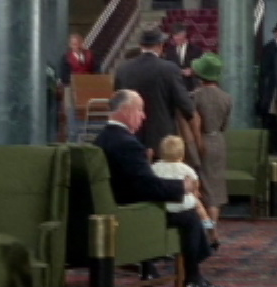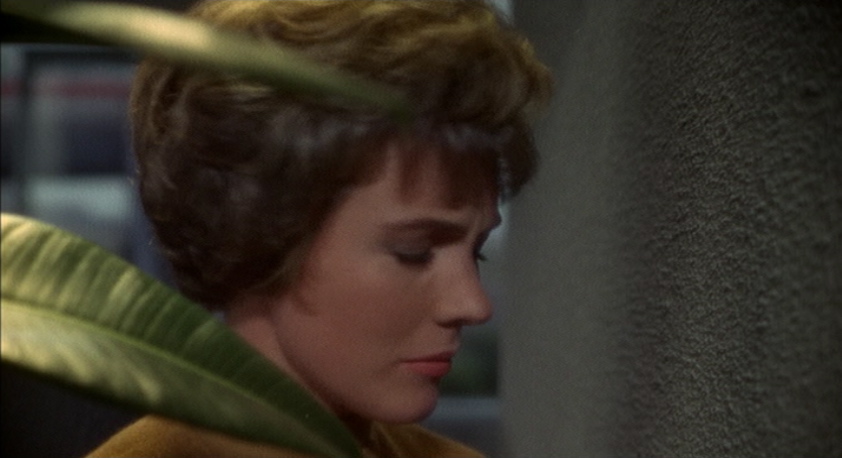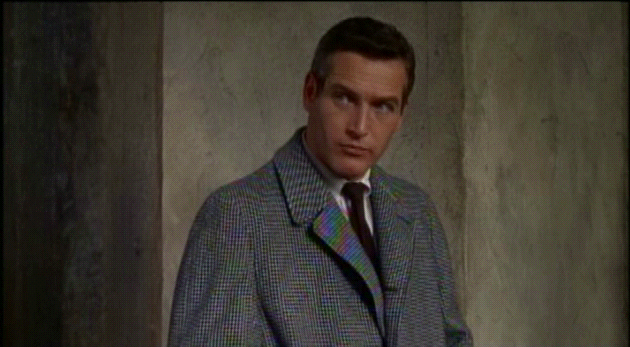- The James Bond Phenomeon
- Hitchcock
Michael Armstrong vs. James Bond
That Arresting Rhythm: Opening Credits and Murders

Hitchcock as the Babysitter
The Aesthetics and Structure of Torn Curtain
About the only aspect of the film Hitchcock was happy with upon conclusion was the basic appearance of the film. The script he found lacking humor and good dialogue but Julie Andrews' schedule pushed the crew into filming before the script was completely satisfactory to the director 12. He did find it quite rewarding as an experiment in light and color, however. Shooting through a gray gauze and using almost exclusively natural lighting, Hitchcock attempted to capture the muted, steeley feeling of life behind the Iron Curtain 13.
Hitchcock, for all his dismissal of the Bond films, follows formulas and patterns of his own; most films contain a cameo, brandy, blonde women, and birds. Additionally, however, his films frequently feature a MacGuffin; in Torn Curtain, in this case, the formula Michael Armstrong must attain from Professor Lindt becomes secondary to the human relationships 14. To Michael, the formula means a revival of his cancelled missle project and an end to the teaching career he has been forced into by the government. To the average viewer with little knowledge of nuclear physics, however, this formula becomes only the reason for Michael's espionage and the relationship problems he creates with his fiancé, Sarah Sherman. Furthermore, the audience will never know to what use the formula is put thought the film rather unambiguously asserts that Michael and Sarah will finally get married 15.
Additionally, Hitchcock's “travel/espionage films” tend to have “a logically cyclical structure,” that of a journey to attain a secret, the acquisition, and the return; Torn Curtain's circular pattern thus contrasts the series of "bumps" or self-contained action sequences that make up a Bond film 16. Furthermore, Hitchcock based his film upon the real-life spies Burgess and MacLean who defected to Russia. Upon learning their story, Hitchcock wondered, "What did Mrs. MacLean think of the whole thing?" Thus the film begins not from the hero or spy's point of view, but from Sarah's and it is not until the second portion of the film that the audience recieves Michaels' perception, which then joins with Sarah's for the couple's escape from East Germany 17. From Russia With Love, on the other hand, except for relatively short sequences where the members of SPECTRE meet and recieve orders, is all from Bond's point of view in order to reinforce that he is the hero of his own film.



The psychology of Torn Curtain is thus far more complicated than From Russia With Love’s and Hitchcock counts on the simplicity of Bond when creating his characters.